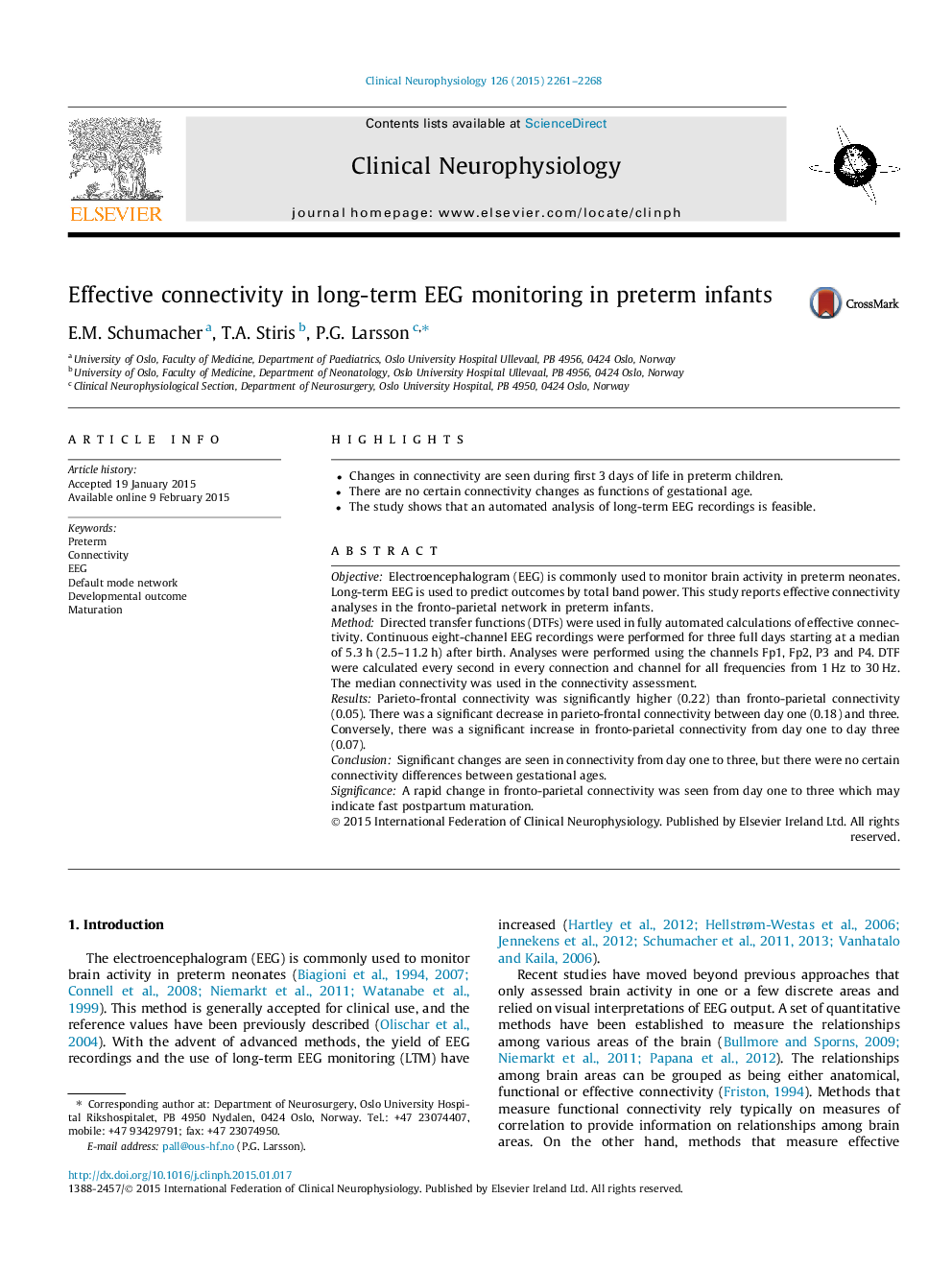| Article ID | Journal | Published Year | Pages | File Type |
|---|---|---|---|---|
| 3043136 | Clinical Neurophysiology | 2015 | 8 Pages |
•Changes in connectivity are seen during first 3 days of life in preterm children.•There are no certain connectivity changes as functions of gestational age.•The study shows that an automated analysis of long-term EEG recordings is feasible.
ObjectiveElectroencephalogram (EEG) is commonly used to monitor brain activity in preterm neonates. Long-term EEG is used to predict outcomes by total band power. This study reports effective connectivity analyses in the fronto-parietal network in preterm infants.MethodDirected transfer functions (DTFs) were used in fully automated calculations of effective connectivity. Continuous eight-channel EEG recordings were performed for three full days starting at a median of 5.3 h (2.5–11.2 h) after birth. Analyses were performed using the channels Fp1, Fp2, P3 and P4. DTF were calculated every second in every connection and channel for all frequencies from 1 Hz to 30 Hz. The median connectivity was used in the connectivity assessment.ResultsParieto-frontal connectivity was significantly higher (0.22) than fronto-parietal connectivity (0.05). There was a significant decrease in parieto-frontal connectivity between day one (0.18) and three. Conversely, there was a significant increase in fronto-parietal connectivity from day one to day three (0.07).ConclusionSignificant changes are seen in connectivity from day one to three, but there were no certain connectivity differences between gestational ages.SignificanceA rapid change in fronto-parietal connectivity was seen from day one to three which may indicate fast postpartum maturation.
